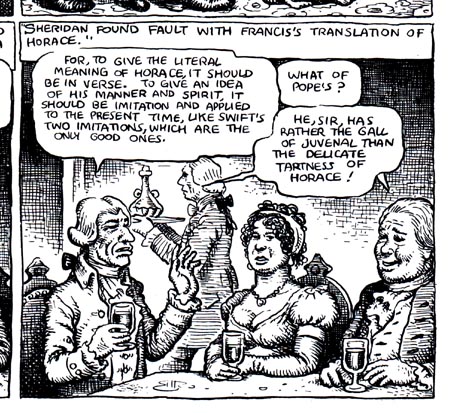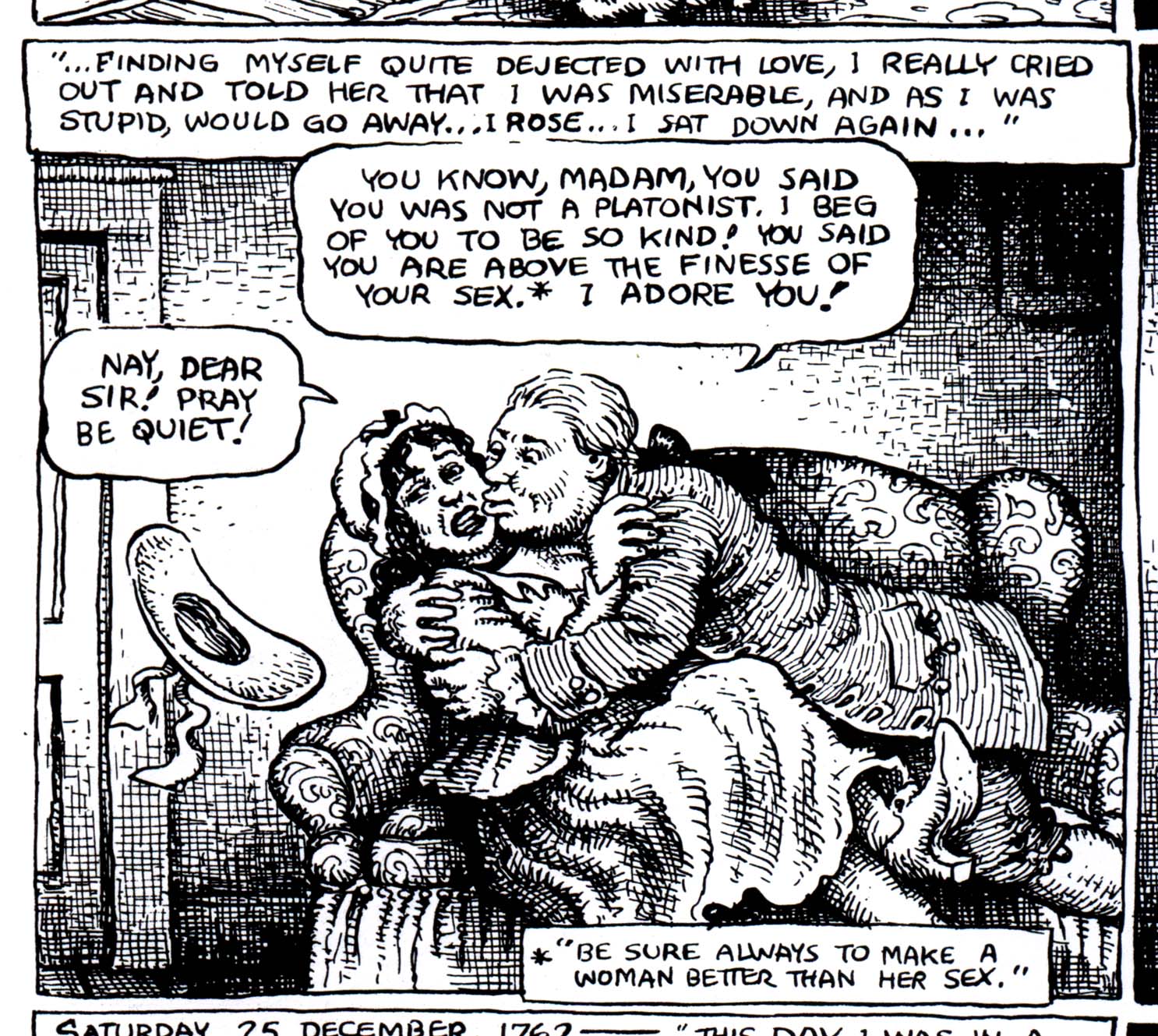|
Panels 5 and 8 of Robert Crumb’s
comic-book version of Sir James Boswell’s London Journal 1762-1763. Boswell exchanges literary civilities with Sheridan
and, five days later, carries on a less refined conversation with “Louisa.”
Crumb’s sequence, entitled “Excerpts from Boswell’s
London Journal” and dubbed “A Klassic Komic,” appeared
in Crumb’s magazine Weirdo #3 (Fall 1981).
Walter
Pape provides an insightful semiotic analysis, in “The Battle
of the Signs: Robert Crumb’s Visual Reading of James Boswell’s
‘London Journal.’” Pape argues that in the competition
between the sister arts, the graphic overpowers the textual.
Maybe
so. But Crumb is emphasizing the juxtaposition of high literary sentiments
and low street morals—a juxtaposition that 18th-century intellectuals
often displayed and one of which Boswell himself was not entirely unaware—and
the satire would not play without the language. I would add that Crumb
is also satirizing his own cartoonist profession, in this case the prolific
enterprise of comic-book classics. One expects Moby Dick
as a “Klassic Komic,” but Boswell’s London
Journal? To use Jay David Bolter
and Richard Grusin’s convenient term (Remediation: Understanding
New Media, MIT Press, 1999), Crumb
is melding two conflicting traditions of cartoon“remediation”
of classic literary works, the genteel and the underground—a contradiction
that finds its 18th-century British counterpart in Boswell’s enthusiasm
for both literary criticism and parlor bawdry.
Pape’s
essay is printed in Peter Wagner (Ed.), Icons—Texts—Iconotexts—Essays
on Ekphrasis and Intermediality;
Berlin: Walter de Gruyter (1996), pp. 324-345. Pape reproduces all 27
panels of Crumb’s “Excerpts from Boswell’s London
Journal,” but Crumb’s extensive text is barely readable,
at least to my tired eyes. I’ve relied on Volume 14 of The
Complete Crumb Comics (Seattle, WA: Fantagraphics Books, 2000).
RH, November 2003
|

